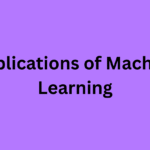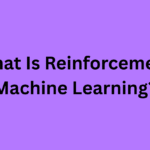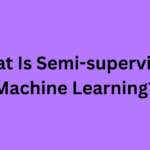Deep Learning
Chapter 1: Introduction to Deep Learning
1.1 Evolution of AI and Machine Learning
1.2 Basics of Neural Networks
1.3 Deep Learning vs Machine Learning
1.4 Applications of Deep Learning
1.5 Tools and Frameworks (TensorFlow, PyTorch, Keras)
Chapter 2: Neural Networks Basics
2.1 Perceptron and Multilayer Perceptron (MLP)
2.2 Activation Functions (Sigmoid, Tanh, ReLU, Leaky ReLU)
2.3 Cost Functions
2.4 Gradient Descent and Backpropagation
2.5 Weight Initialization, Normalization, and Regularization
Chapter 3: Deep Neural Networks
3.1 Architecture of DNNs
3.2 Vanishing and Exploding Gradient Problem
3.3 Dropout and Batch Normalization
3.4 Hyperparameter Tuning
3.5 Optimization Algorithms (SGD, Adam, RMSProp)
Chapter 4: Convolutional Neural Networks (CNN)
4.1 Introduction to Image Processing
4.2 CNN Architecture: Convolution, Pooling, Padding
4.3 Filters and Feature Maps
4.4 Transfer Learning and Pre-trained Models
4.5 Applications: Image Classification, Object Detection
Chapter 5: Recurrent Neural Networks (RNN)
5.1 Sequence Modeling Basics
5.2 Vanilla RNNs and their Limitations
5.3 Long Short-Term Memory (LSTM)
5.4 Gated Recurrent Unit (GRU)
5.5 Applications: Text Generation, Time Series Prediction
Chapter 6: Autoencoders and Variational Autoencoders
6.1 Autoencoder Architecture
6.2 Undercomplete and Overcomplete Autoencoders
6.3 Denoising Autoencoders
6.4 Variational Autoencoders (VAE)
6.5 Applications: Dimensionality Reduction, Anomaly Detection
Chapter 7: Generative Adversarial Networks (GANs)
7.1 GAN Architecture (Generator and Discriminator)
7.2 Loss Functions in GANs
7.3 Types of GANs (DCGAN, CycleGAN, etc.)
7.4 Training Challenges and Solutions
7.5 Applications: Image Synthesis, Deepfakes
Chapter 8: Deep Reinforcement Learning
8.1 Basics of Reinforcement Learning
8.2 Markov Decision Processes (MDPs)
8.3 Q-Learning and Deep Q-Networks (DQN)
8.4 Policy Gradient Methods
8.5 Applications: Game AI, Robotics
Chapter 9: Advanced Topics and Trends
9.1 Attention Mechanism
9.2 Transformers and BERT
9.3 Explainable AI (XAI)
9.4 Ethical Considerations in Deep Learning
9.5 Current Research and Industry Trends
Chapter 10: Project and Case Studies
10.1 Real-World Deep Learning Project Guidelines
10.2 Case Study: Healthcare AI
10.3 Case Study: Self-driving Cars
10.4 Case Study: Natural Language Processing
10.5 Tools for Model Deployment (Flask, FastAPI, Streamlit)






